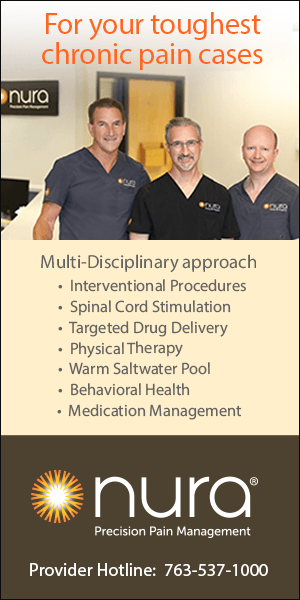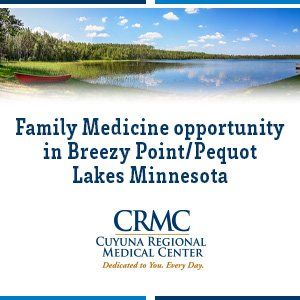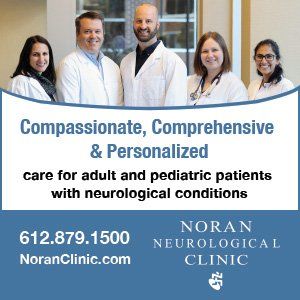i. I’m Dr. Emily Hause, the pediatric rheumatology fellow. Let’s discuss the results from your recent labs: your CBC, ESR and CRP were unremarkable. Your creatinine remains a bit high at 1.4, and the EKG looked good. I’ll check with my attending about discharging you from the hospital today. You’ll need to follow up with your PCP, who may make a referral to Nephrology. Do you have any questions?
cover story two
Patients and Medical Jargon
A study of misunderstandings
By Emily Hause, MD and Jordan Marmet, MD
If you’ve graduated from medical or nursing school, this paragraph should make complete sense to you and might even mimic medical encounters you’ve witnessed at some point in your careers. Unfortunately, if you’re a patient, these brief sentences are full of enough medical jargon to be rendered completely nonsensical. When patients don’t understand their plans of care, they are not truly being included in shared medical decision-making.
Jargon Oblivion
Working in a hospital setting, we’ve heard examples of when “patient and family-centered rounding” goes well and when it goes poorly, in part, due to this jargon use. Why do health care providers continue to use medical jargon in patient encounters, despite knowing they shouldn’t? Our research team at the University of Minnesota Medical School hypothesized this was largely due to what’s been coined “jargon oblivion.” This concept is that doctors and nurses spend so much time training and being immersed in the medical world they forget which words and phrases are commonly understood by the general public. Medical professionals have invested years in learning the foreign language of medicine, designed to specifically and efficiently communicate with one another, though not intended for communicating with our patients.
The public remains confused by many of the medical roles, ranks and specialty names.
Born out of frustration in hearing technical, jargon-filled sentences used at the bedside or in a clinical setting, our research team set out to answer some very clinical questions: What is the lay public’s understanding of common words or phrases typically encountered in medical settings? What about common abbreviations we hear used regularly? What’s their understanding of technical words or disease names—words like afebrile or myocardial infarction? Do patients understand the medical roles and titles we use when introducing ourselves in a clinic or hospital-based practice?
We began with a literature review, seeking answers to our clinical questions. We found articles that addressed some of those questions, but there were still large gaps in our understanding of the lay public’s knowledge and perceptions about medical jargon. Previous studies reported that technical terminology, abbreviations and acronyms were the most common types of jargon utilized. Some studies were performed in doctor’s offices, some in other medical settings like emergency department waiting areas. However, we felt these could mismeasure the public’s understanding by cherry- picking from a cohort of people already seeking care under a given specialty, resulting in an anchoring bias. There are also context clues present in a medical setting that may point people in one direction or another in terms of an answer.
Seven Deadly Sins
Drs. Mike Pitt and Marissa Hendrickson, two collaborators on our new research project, had previously published on their proposed classification system of medical jargon (“Journal of General Internal Medicine,” 2019, cited with the authors’ permission), which divided jargon into seven categories. They defined technical terminology as words learned in medical school. This would include disease names, tests and anatomical names. Alphabet soup represented acronyms and abbreviations. Examples of these are CBC, NPO, EKG, MI and PCP. Medical vernacular are words that may be familiar to the public, but are not universally understood, for example, sepsis and steroids. TV medical dramas have exposed the public to a lot of these types of terms, without giving them a complete understanding of what they mean. Medicalized English is the category of words which have a well-understood meaning in common usage but often have a different meaning in medicine, sometimes even the exact opposite meaning. This includes words like negative and positive. In most contexts, negative typically indicates something bad, such as negative feedback or negative implications. However, in the medical context, negative typically has the opposite meaning; a negative test result is favorable, implying that you don’t have the disease or condition screened. Other examples would include words like tenderness or phrases like “I don’t appreciate a liver edge.” Unnecessary synonyms are overcomplicated terms used in medicine even though there are readily available alternatives. This includes saying upper extremity instead of arm, or erythematous instead of red, which overcomplicates the message. They defined euphemisms as words or phrases that health care workers might use in trying to make their concept more understandable, when in fact it may open the door to more potential misunderstandings. An example of this would be telling a patient they have bugs in their urine when trying to explain a UTI. Another example would be when a care provider mentions a spot on the lungs when trying to say there’s an unexplained finding on a patient’s chest x-ray. This also applies to times when a physician is trying to lighten the tone of their language, for example substituting died with expired. Finally, judgmental jargon was coined to indicate phrases which may be perceived by the public as derogatory. Doctors may write in their notes about a patient’s chief complaint or document that their patient denies drug use. In today’s world of OpenNotes, giving patients access to all their medical records, it’s not a stretch to imagine patients reading this in their provider’s notes and becoming angry: “I wasn’t complaining about my back pain,” or “I haven’t been using drugs, why didn’t they believe me?”
Developing the Study
Using this paradigm of different jargon types, we felt the medical literature fell short of testing the public’s knowledge of medical jargon. We sought to answer novel questions with nuanced layers. To do this kind of research, we didn’t need to collect any body fluids, manipulate test tubes on a benchtop or even collect any protected health information (PHI). We needed to survey the lay public, but how to go about it while avoiding the anchoring bias of prior studies? We opted to conduct our surveys at the Minnesota State Fair, where we’d be more likely to get a cross-sectional look at the Minnesota public. By 2019, attendance at the state fair reached a record high, making it the highest per capita attendance of any state fair in the U.S., with approximately 20% of the state’s population in attendance.
The University of Minnesota operates its Driven to Discover (D2D) research building throughout the run of the state fair and allows selected projects to be conducted there with a voluntary audience. The building sees foot traffic across a typical year’s 12-day fair of about 60,000 people, with over 20,000 enrolling in various research projects pre-pandemic. This provided us a forum to engage with the Minnesota public, and some of the necessary tools, for example, tables, chairs and iPads. First, we formed a team to develop our research questions, including alignment with a UMN statistician. We next embarked on some self-learning in how to design effective research surveys. We designed our anonymous surveys, using a combination of multiple-choice questions and fill-in-the-blanks, allowing both quantitative and qualitative analysis. We laid out our intended research protocols and applied to the UMN Institutional Review Board (IRB), obtaining their exemption that this did not fall under formal human subject research. Applying for a small grant enabled funding for our limited expenses, primarily covering the cost of our giveaways and research costs, totaling just a few thousand dollars. Before performing our study at the fair, we opted to break up our larger survey into three smaller ones to keep volunteer participant time down to a maximum of five to ten minutes. We also adapted the survey to an electronic tool, REDCap, which enabled us to collect data via the D2D iPads. This platform also stored the de-identified information for later analysis.
People had the misconception that an occult infection had something to do with witchcraft.
Results and Takeaways
Ultimately, we found many interesting findings, some of which have already been published and others which are still getting drafted for submission. One of our biggest takeaways is that the public remains confused by many of the medical roles, ranks and specialty names commonly discussed with patients in medical settings (“Journal of Hospital Medicine,” Sept. 2022). Twelve percent of our sampled public could place physicians in the correct order of their medical ranks: medical student, intern, senior resident, fellow, and attending. Most (44%) believed the senior resident is the most experienced; only 27% placed the attending there. The public also lacks understanding of many medical specialty names. We asked participants to answer questions like: “Pulmonologists are doctors who take of what.” The least understood four fields were nephrologist (20%), internist (21%), intensivist (29%), and hospitalist (31%). Our qualitative analysis of the free-text responses also uncovered some fascinating misconceptions. For example, four percent of respondents thought that a nephrologist is a doctor specializing in death. The top five most understood fields we surveyed in our study (which was not inclusive of all medical specialties) included: dermatologist (94%), cardiologist (93%) and a tie between pediatrician (89%), neurologist (89%) and gastroenterologist (89%).
We futhermore found most participants knew that “negative cancer screening” results meant they did not have cancer, but fewer people understood that the phrase “your tumor is progressing” was bad news or that “positive lymph nodes” meant the cancer had spread. Our representative sampling found the public did not understand the words afebrile, NPO, or occult infection. In fact, more people had the misconception that an occult infection had something to do with witchcraft than correctly understood it implied a hidden infection in their bodies. More participants understood “Your blood test showed me that you do not have an infection in your blood” than those who were told “Your blood culture was negative.” Most understood that an unremarkable chest x-ray was a good thing, but much fewer knew that a clinician describing a finding in their chest x-ray as “impressive” was generally bad news.
We also learned some interesting things about conducting this type of survey research about jargon. We learned that the people at the state fair who were willing to participate in jargon-based research were generally older, more educated and female-predominant. This presumably represented those who were more willing to step away from the food, shopping and entertainment at the state fair to take a survey to enhance medical knowledge. If anything, we measured a group that was more likely less than a perfect cross section of the public to answer correctly about our surveyed medical terms and phrases. That said, this method of surveying the public at a state fair was a statistically reasonable means of sampling the public’s knowledge and was an efficient way to enroll a high number of study participants over a short time period. We screened out any would-be participants who were less than 18 years old and anyone who had personal medical or nursing training. Just like a sampling of the public, people had variable personal experience with the medical system or with family members in healthcare or allied health fields.
Our research team hopes that a medical audience will take away some key lessons. We advocate for physicians to describe their role to their patients in addition to saying the name of their medical specialty. In place of saying, “I’m an Internist” and assuming that patients understand that word, instead introduce yourself as “an internist, a doctor who cares for all general needs for adult patients.” Instead of telling patients, “Your blood culture was negative,” avoid jargon and insert emotion words to help people understand better: “I’m glad to see your blood culture did not grow bacteria.” Avoid leading questions, like “Do you have any questions?” which asks a binary yes/no question. People may feel pressure to say what they think we want to hear, “No.” Instead, substitute: “What questions do you have?” This is a more open-ended question, which implies that we assume they do have questions and we’re ready and willing to answer them. We hope to continue our research into physician-patient potential communication pitfalls and better ways to get our messages across our patients.
Emily Hause, MD, is a pediatric rheumatology fellow at the University of Minnesota. She is also known as “a pediatrician training to be a specialist in joints and conditions of body inflammation”. Jordan Marmet, MD, is a pediatric hospitalist (aka “a hospital-based pediatrician”) and associate professor of pediatrics at the University of Minnesota.
Jordan Marmet, MD,
is a pediatric hospitalist (aka “a hospital-based pediatrician”) and associate professor of pediatrics at the University of Minnesota.
MORE STORIES IN THIS ISSUE
cover story one
Connecting Primary and Specialty Care: Improving medical practice
By Elizabeth Seaquist, MD
cover story two
Patients and Medical Jargon: A study of misunderstandings



















